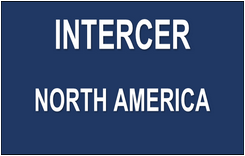PAS 2060 standard was published by the British Standards Institution in 2010 and updated in 2014. It enables organisations to demonstrate that their carbon neutrality claims are credible and
verified in order to increase customer confidence.
It provides guidance on how to quantify, reduce and offset GHG emissions on a specified business area.
This can include activities, products, services, buildings, projects, cities and events.
Whilst companies can calculate their footprints, purchase credits and claim carbon neutrality, the PAS 2060 standard provides a framework for accuracy and certification. This is increasingly
key as companies and governments are moving towards a net-zero world by 2050.
Measure
The first step in the process is to calculate the carbon footprint of the product, activity or organisation (the "subject" of the carbon neutrality claim), making use of internationally recognised methodologies.
For organisations, the recommended calculation methodologies are ISO 14064-1 or GHG Corporate Protocol, and for products and services it would be to perform a PAS 2050
lifecycle assessment.
The footprint calculation of the subject should include 100% of Scope 1 and Scope 2 emissions and all Scope 3 emissions that contribute to more than 1% of its total
footprint.
The calculation organises the emission sources into scopes, based on the degree of control that an entity has on them:
• Scope 1 - Direct emissions from the activities that are under an organisation’s direct control, such as fuel combustion, vehicles and fugitive emissions.
• Scope 2 - Indirect emissions related to the production of electricity, heat and steam that is purchased by the organisation.
• Scope 3 - All other indirect emissions resulting from activities that are neither owned nor controlled by the entity. This includes emissions related to the use of consumer goods, transportation, waste treatment, and employee travel.
However, it should be noted that, while the standard requires a robust footprint measurement process, it provides flexibility in recognising that it may not be technically and economically feasible to accurately calculate emissions from all sources. In such cases, these sources may be excluded from the scope of.
PAS 2060

INTERCER NORTH AMERICA
880 Third Avenue, 5th Floor, New York, NY 10022
Office Hours: Monday through Friday. 9:00 am to 18:00 pm Eastern Standard Time (EST)
THIS WEBSITE DOES NOT USE COOKIES OR ANY MEANS OF VISITOR CONTROL.

